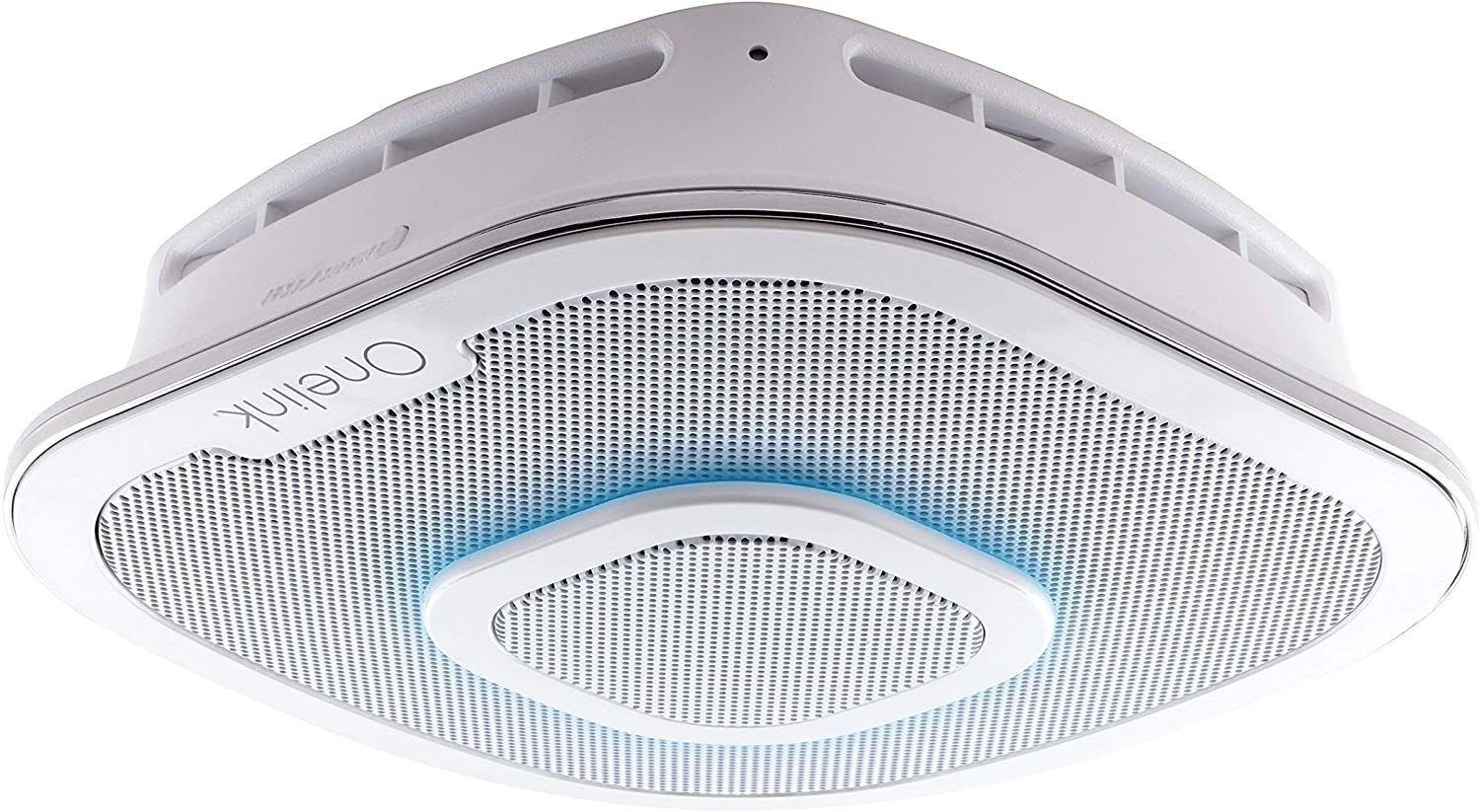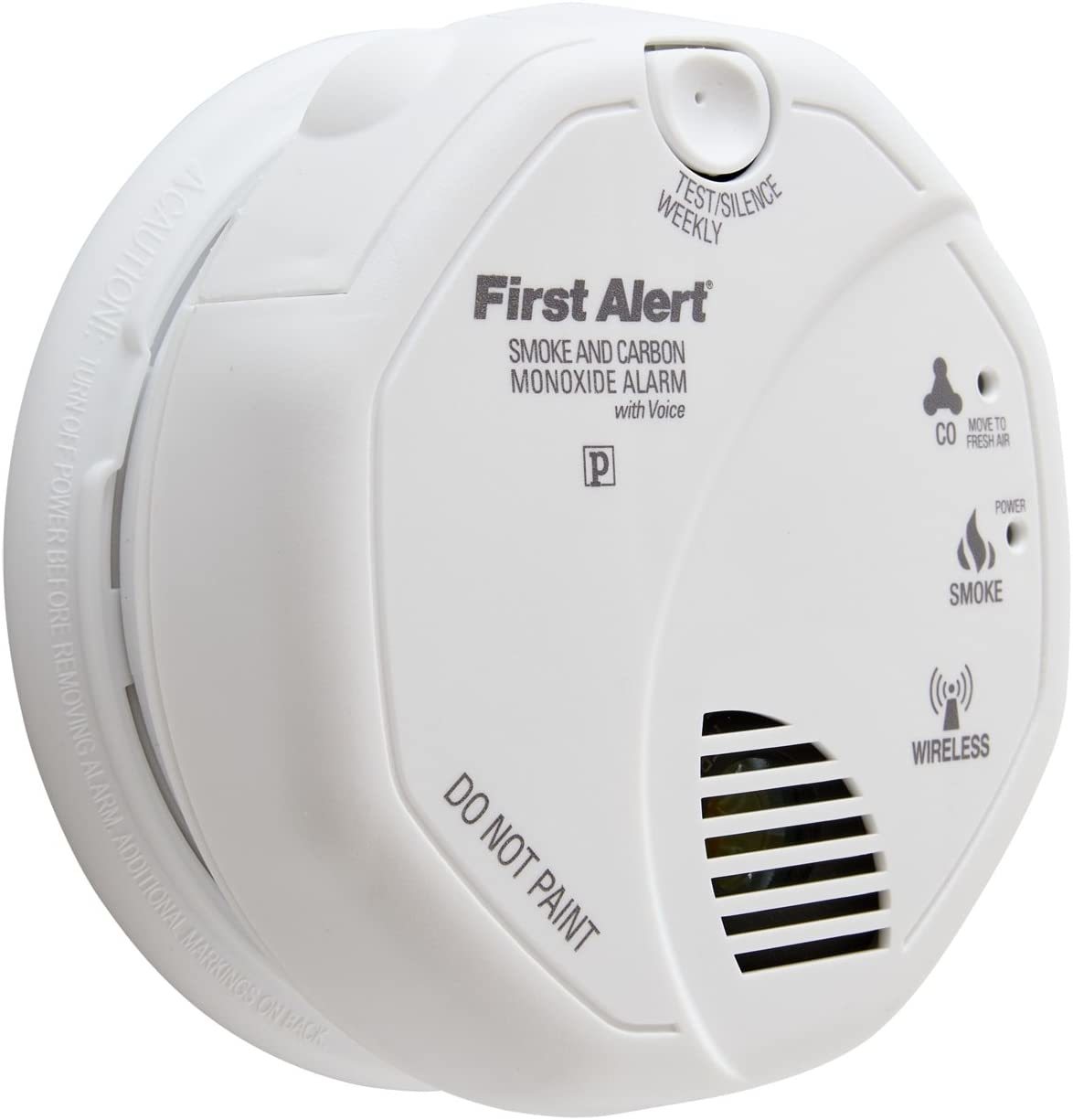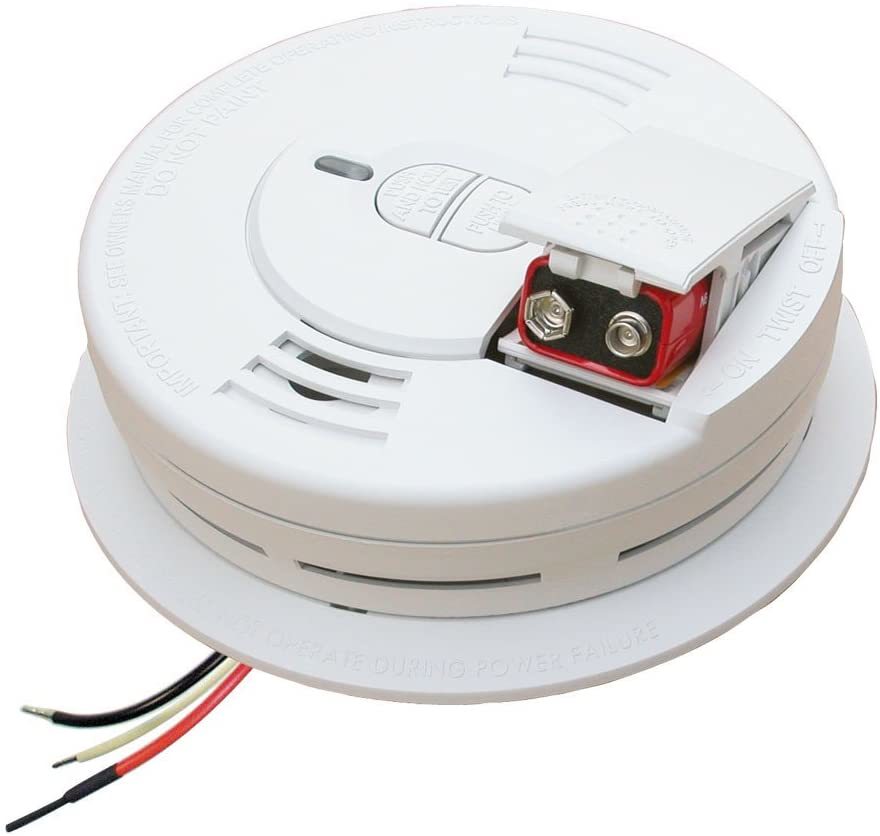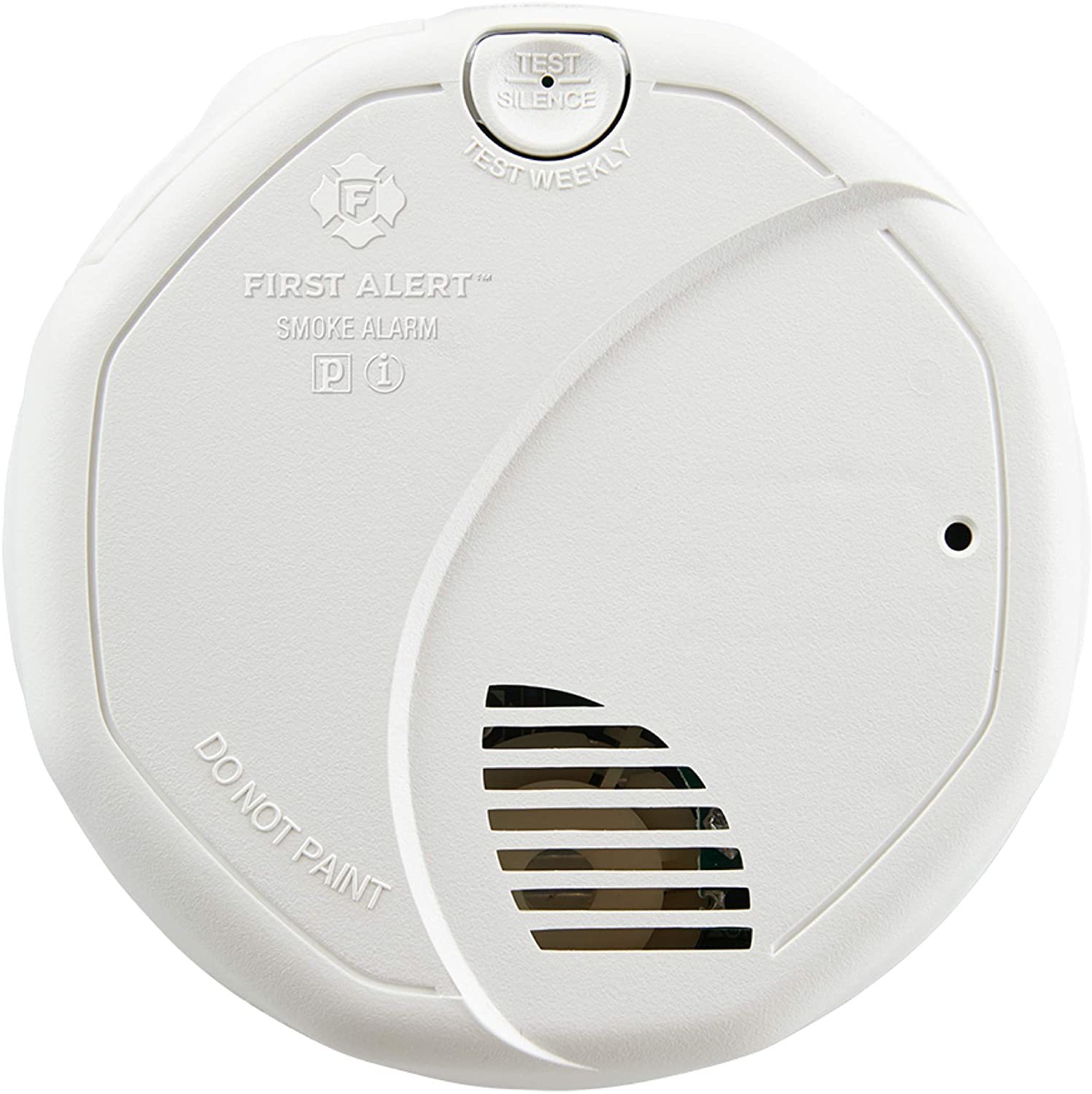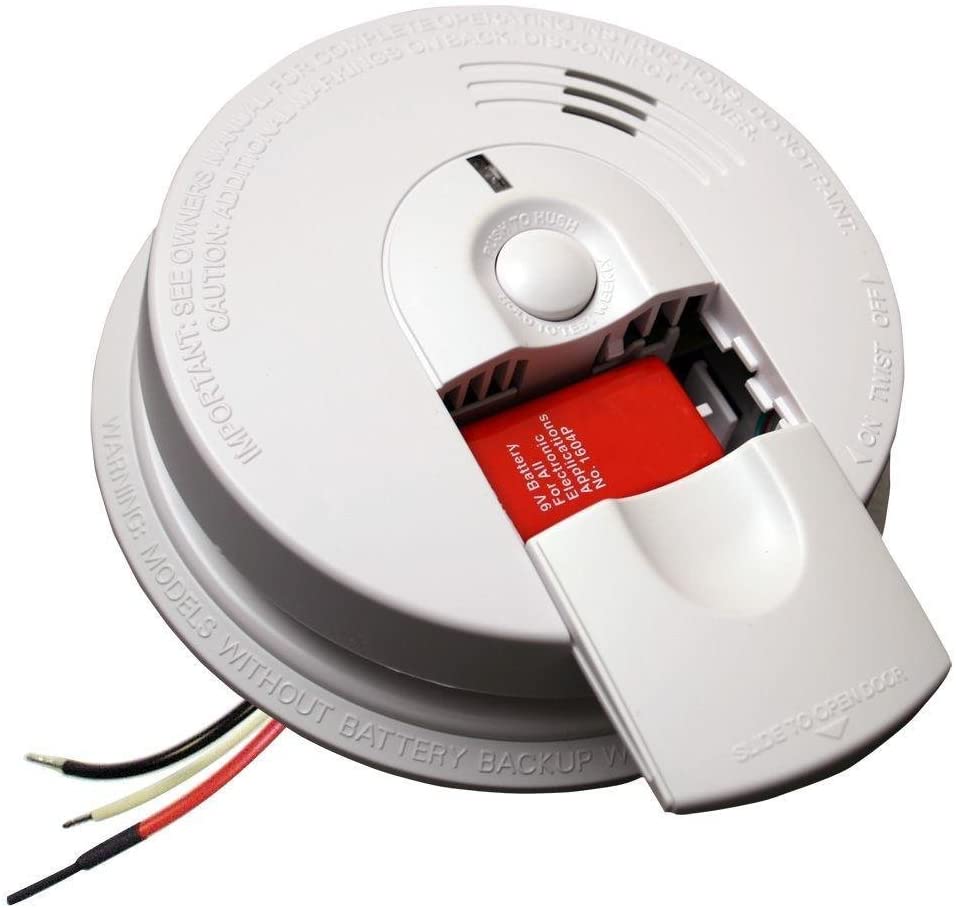Choosing the right smoke detector for home use isn’t easy. In this buyer’s guide, I have reviewed the seven best smoke detectors of 2024.
I’m sure you’ll be able to find one that meets your needs here. Buying a smoke detector is not just a case of buying products that look good and are affordable.
What price do you put on your property, your family and irreplaceable items? These may represent the best available, but there is more to it, or I could have just listed one.
I recommend you start with my guide to understand the different considerations…
…then work back to the top once you have a better idea of what the features and benefits mean in relation to your unique needs.
With each review, I have highlighted attributes for each product.
7 of the best smoke detectors for home use – Reviews:
1. Google Nest protect S3003LWES: Best Overall Smart Smoke Detector
The Google Nest Protect S3003LWES is one of the best smoke detectors for home use.
Being a Google product, you would expect it to be connected, and of course, it is.
It connects to your Wi-Fi, and if the alarm goes off, it can both talk to you in words and send a message to your mobile.
In addition to Wi-Fi, this modern smoke detector also communicates via Bluetooth Low Energy, one of the more recent means of communication that has a range that should cover most situations where you might be outside the house, but within the property.
A frequent alarm activation occurs due to burnt toast, and I have had the frustration of having to find something to stand on, to reset the alarm in a hurry.
The ‘Heads-Up’ feature allows you to deal with it before the full alarm sounds.
One of the by-products of a house or building fire is smoke, and another is Carbon Monoxide (CO).
This device detects both, which means you don’t need two separate sets of alarms.
An added benefit is that you can have a dangerous CO leak or event without fire, and if the detector is in the right location, you will be alerted.
They seem to have thought of everything with this device. It has a sensor ‘path-light’ that will light up at night when you walk under it.
It also comes in battery-powered and mains power options, so you can install it yourself and replace batteries or have it professionally installed by an electrician and not have to worry about it again for the lifetime of the product.
This smoke detector is an excellent device for the home, especially keeping families safe, such as at night when everyone is asleep, or when people are outside.
Google ‘Works with Nest’ is a concept that allows smart devices to communicate together within a common platform.
Google announced in mid-2019 that this family of products would be disestablished; however, it has since been migrated to Google accounts, so this product is still viable.
Read my hands-on review of the Google Nest Protect 3rd Generation Smoke/Carbon Monoxide Alarm (S3000BWES).
Pros
Cons
2. First Alert Onelink Smoke Detector: Runner Up Smart Smoke Detector
Coming in a two-pack to extend the range of detection, the First Alert Onelink Smoke Detector will activate an alarm for both smoke and carbon monoxide.
It is designed for DIY installation and will talk you through the installation process, which is excellent for installation in the home by people who don’t like to read manuals.
This smart home product, which is Alexa Enabled, connects to your Wi-Fi and features a high-quality speaker.
As well as being an alarm, it is a fully functional Amazon Alexa device.
You can talk to it, give it instructions, communicate hands free with other people with it and connect it to your home entertainment system.
While this is not the core reason you would purchase it, if you were planning on buying Alexa speakers, you get that functionality built into the alarm, with the added benefit of not having to find shelf space for Alexa.
With a photoelectric smoke sensor and electrochemical carbon monoxide detection, this device has a long life, including a 10-year battery back-up.
The Onelink Safe & Sound nightlight provides not only for a lit path during the night but can also shine brightly during the day for better light in an emergency.
This feature does require that the device is connected to mains power for obvious reasons.Pros
Cons
3. X-Sense SD03: Best Battery Life
The X-Sense SD03 smoke detector has an advanced photoelectric sensor that can quickly detect slow-burning fires and minimizes false alarms from cooking.
It connects to AC power, which provides power for the Lithium battery which is designed to last for ten years and provides back-up so that the alarm will continue to function in the event of a power cut.
This smoke detector features a 3-color LED light so that you can tell the status of the device at a glance. The light is bright and clearly visible during the day.
The X-Sense detector is approved by the ETL and conforms to the UL 217 Standard.
This alarm comes with a 10-year warranty which is standard for all X-Sense products.
It is suitable for home or office use and is very easy to install.
Read my hands-on review of the new X-Sense Smoke and Carbon Monoxide Detector.
Pros
Cons
4. First Alert SCO500B: Best Smoke and Carbon Monoxide Detector Combo
This combination smoke and carbon monoxide detector from First Alert is battery powered and easily installed.
First Alert has been around since 1958 and has over 60 years of experience in the industry.
This smoke detector model can be connected to a Wi-Fi safety network and features a voice alarm to indicate where in your home or building the smoke is coming from.
Up to 16 compatible smoke alarms can communicate with each other and alert you when there is a problem across the house, even in different rooms and floors.
It has a photoelectric smoke sensor and an electrochemical carbon monoxide sensor.
The photoelectric smoke sensor can reduce false alarms from cooking smoke or steam from the shower.
The CO sensor detects carbon monoxide leaks from multiple sources, including faulty fuel-burning appliances.
Only one button is required for both testing and silencing the alarm.
The siren puts out a loud 85-decibel sound, designed to wake sound sleepers and a voice alarm indicates where the threat is, with pre-programed options for room types.
I would consider earplugs when installing and testing this device.
Read my hands-on review of the latest First Alert SCO5CN Combination Smoke and Carbon Monoxide Alarm.
Pros
Cons
5. Kidde i12060: Best Budget Smoke Detector
This Kidde i12060 smoke detector requires AC power, backed up with a 9-volt back-up battery, which ensures that the device will still work in the event of a power failure.
This model is extremely easy to install.
The battery compartment is accessible from the front panel, without having to remove the device from the ceiling.
The Kidde i12060 has a hush button, which desensitizes the alarm for approximately 7 seconds to deal with nuisance alarms set off by cooking smoke, for instance.
During this time, it chirps every 30 to 40 seconds and then resets itself.
However, if smoke increases during this time, indicating perhaps that the nuisance has turned into something worse, the alarm will activate again as usual.
This smoke alarm uses ionization sensing technology which may detect invisible fire particles, associated with flaming fires, sooner than photoelectric alarms.
This device comes with a 10-year limited warranty.
Read my hands-on review of the Kidde Combination Smoke/Carbon Monoxide Alarm (21026043).
Pros
Cons
6. First Alert BRK 3120B: Best for Most Households
The First Alert BRK 2130B is an excellent combination of photoelectric and ionized alarm.
It can detect both flaming fires, such that would occur from kitchen grease or combustion, as well as smoldering smoke such as one started by a lit cigarette on the carpet, furniture or bedding.
This smoke detector is designed for use in residential and institutional applications including sleeping rooms of hospitals, motels, dormitories and family dwellings.
The First Alert BRK 2130B model meets building codes where AC/DC photoelectric and ionized combination smoke alarms are required.
With a loud 85-decibel, you’ll hear it go off whether you’re sleeping or nearby your home.
If you’re not home, your neighbors are sure to hear it if it is set off.
It is hardwired to AC mains power but also features a back-up battery, so this unit will continue to operate in the event of a power failure.
A single button makes it easy to test and reset after the alarm has gone off.
The First Alert BRK 3120B smoke detector has a dust cover, which is a nice feature not found on some of the other alarms.
Dust has been associated with false alarms and can compromise the reliability of smoke detectors.
This unit can interconnect with other alarms in the network, which means that when one goes off, so do the others in the system.
Pros
Cons
7. Kidde i4618: Best False Alarm Prevention
One of the annoying things about some smoke alarms is ‘false alarms’ caused by burnt toast or other cooking activities.
The Kidde i4618 features the Kidde ‘Smart Hush™’ control which allows you to deal with a minor event, and resets itself after around 8 minutes, letting you know during that time with chirps and flashing LED, that it is in that mode.
This model comes in a pack of 4 units which can be positioned in multiple locations around the home. It comes with a 5-year warranty.
As with some other Kidde units, this AC powered alarm has a 9-volt back-up battery which can be accessed from the bottom of the unit without removing it from the ceiling, which is very convenient.
The Kidde i4618 uses ionization sensing technology which is better at detecting flaming fires as opposed to smoke. You should consider where to install these, and if you choose this option, you may want to purchase sensor alarms that have photoelectric sensors, which are better for smoldering smoke events.
Coming with a dust cover, it provides a level of protection against dust and fumes, which can be a cause of false alarms or unsatisfactory operation.
Pros
Cons
Buyer’s Guide
Often buying a smoke detector is something we do without much forethought. Perhaps there has been a media campaign reminding people of the dangers of fire.
A smoke detector is a bit like insurance; you buy it hoping you will never have to use it.
You want to know that it will be there for you if the worst case does happen.
In this guide of best smoke detectors, I have looked at several different smoke detectors and have provided information about some of the things I feel you should be thinking about when deciding on what to buy.
Installation
It pays to consider your experience and knowledge when purchasing alarms as well as legal considerations.
An electrician might better install alarms connected to the mains.
In some cases, maximizing the use of alarms, such as connecting to each other, and in networks can be complicated and may require the experience of an alarm specialist/electrician.
This provides peace of mind but adds to the cost.
The National Fire Protection Association (NFPA) recommends installing interconnected alarms by a professional electrician to ensure if one goes off, the others will too.
They also say it is important to install alarms from the same manufacturer to ensure they will work with each other.
Multi-functional Smoke Detectors
Where there is smoke there is fire.
Worse than that, it is dirty fire, that’s what causes the smoke.
Many people are not only killed, or seriously hurt, from smoke inhalation, but also from CO poisoning.
Carbon monoxide has no smell so it is a silent killer and that might be the thing that catches you unawares.
The benefit of buying a detector that detects both smoke and carbon monoxide, is that you don’t need multiple types of alarms.
Connected Devices
Fires don’t always happen when you are at home, or in the house.
Often fires occur through an electrical fault, or maybe because of something left on the stove and forgotten.
We often hear stories of people being rescued, who suffocated, having been asleep, otherwise not aware, or not home.
Having an alarm that can communicate with other devices, like your mobile phone, is added insurance against that risk.
Lifespan
The technology used in smoke detectors is based on a chemical reaction.
This means they do not last forever, but they do last a long time. Meaning you often will set and forget it.
I always look for detectors that last a long time, but that will also tell me when it is nearing replacement time.
Please note that the lifespan starts when the device is manufactured.
Sometimes aged stock may accidentally be shipped, so it is wise to check before installation.
When considering lifespan, note the details of the warranty which isn’t the same for all devices. It is worth reading the fine print.
Back-up Power (Batteries)
Batteries are a consideration if you are installing sensors that do not have mains power. Batteries deteriorate even when they are never used.
You might consider it important that batteries are included with the sensor, but you have no way of telling how old they are, even if the devices were very recently manufactured.
According to a report from the NFPA, in fires in which smoke alarms were present but did not operate, more than two of every five had missing or disconnected batteries.
The same report found that dead batteries caused 25% of the smoke alarm failures.
Most smoke detectors these days are battery powered, which I often forget to test, except for the once a year when I see media campaigns reminding people to test them.
That means for the rest of the year, the battery could go flat and unless it has an alert to warn me, I might not know.
The alternative is to purchase detectors that run off mains power, in which case they are around all the time.
However, what happens if the power fails? I look for an alarm that also features a back-up battery.
The NFPA advises that smoke alarms with non-replaceable batteries be replaced straight away and alarms with any other type of battery need to have the batteries replaced once a year, or straight away if the low power indication is activated.
Alarm Sound
If you have multiple alarms and they only feature a loud screeching tone, it may be difficult to identify which part of the house the threat is located.
Some devices with voice functionality will tell you where the fire is, for example, in your child’s bedroom or the kitchen.
This is a great feature for a family home.
Sensor Type
A few sensor types can be used specifically for smoke alarms. These include:
- Ionization Sensors, which work well for flaming fires but are not as efficient in detecting smoke
- Photoelectric sensors, which are perfect for smoke and tend to be very efficient at detecting low levels of smoke, but also false alarms; and
- Dual-sensor smoke detectors will detect both smoldering fires from objects such as a cigarette burning on furniture as well as fast-flaming fires like erupting kitchen grease fires or combustibles.
Conclusion/Recap
You would think that buying smoke detectors was as simple as picking something that you think looks good and meets your budget.
Unfortunately, that is not the case.
I recommend reading the smoke detectors buyer’s guide and then reading through the reviews of the individual products in this Best Smoke Detectors of 2024 guide.
The first thing you should consider is what your risks are in your home or location where the alarms are needed.
You should also be aware of legal requirements and the recommendations of your insurance company.
Another consideration is your technical ability and ease of installation, especially where alarms are interconnected and connected to the AC power supply.
Sometimes paying a little more, either for the product or an experienced installer can save you a lot of grief.
Reading through this guide, you should be able to make a purchasing decision that gives you peace of mind both for the safety of your family and friends as well as your property.
Feel free to send your own reviews and comments below.
More detector/alarm-related reviews and buyer’s guides:



